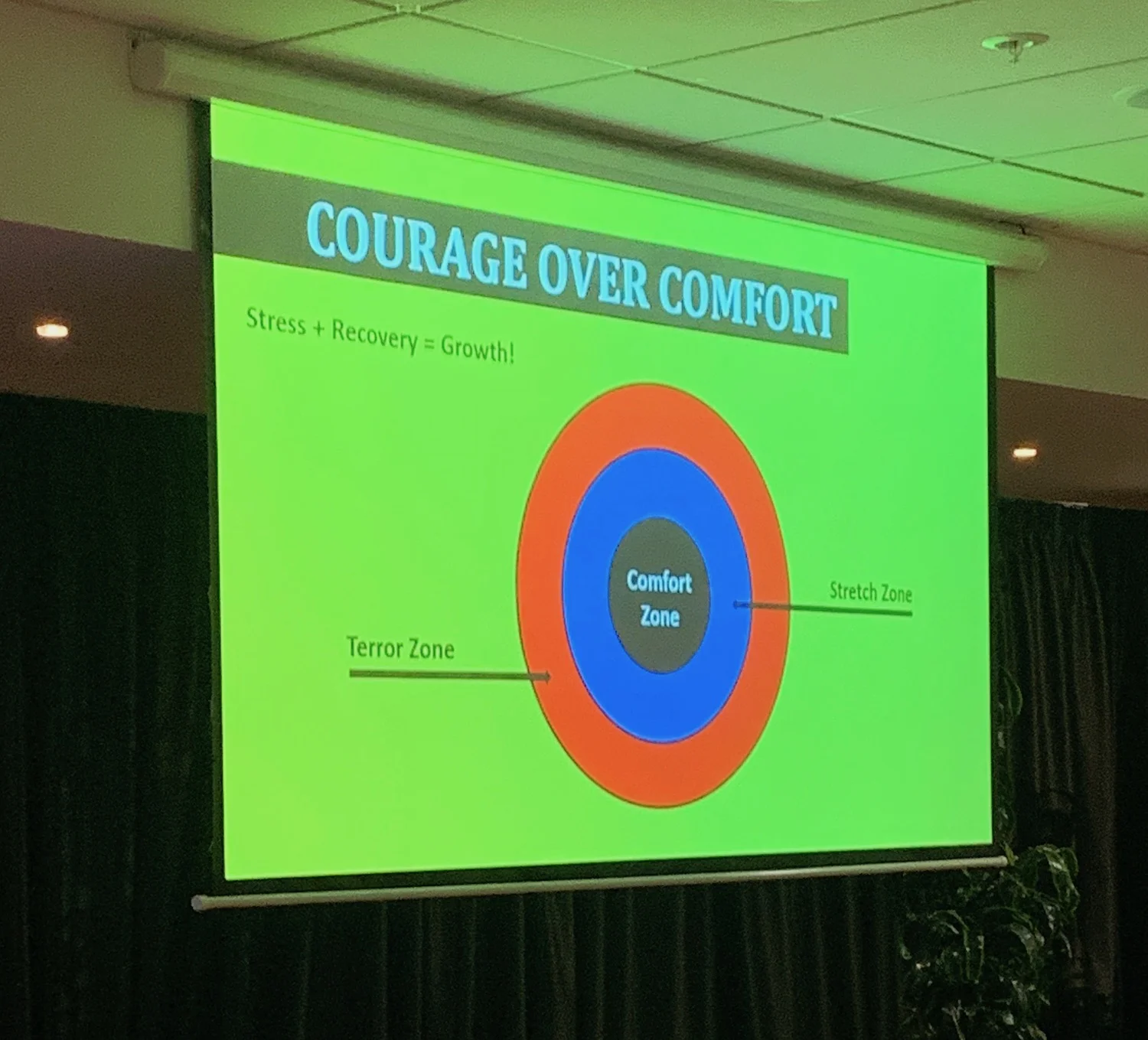Who is in the danger zone?
I was recently at a conference in New Zealand where the closing keynote speaker was the amazing Dr. Paul Wood.
You can read all about him for yourself but rest assured that his story is inspiring.
Paul showed this slide and I just had to take a picture.
It depicts three zones: the comfort zone, the stretch zone and the terror zone.
Comfort zone
The comfort zone is where you feel calm and safe but there is not much happening. There is not much movement or learning.
When you are in this zone there is no growth.
It is ok to be in this zone sometimes but if you stay to long the size of the comfort zone actually shrinks as you become more and more fearful as more things don't feel safe.
Stretch zone
Where we really need to be for learning, development and growth is just into the stretch zone. The best place is on the edge
This is where we push ourselves to improve.
We get out of the comfort zone and have courage to try new things. We are daring and brave in this zone.
Yes there is stress in this zone but as Paul said, this is the good stress. Not all stress is bad. The good stress is a result of being vulnerable and exposed. In this zone we probably feel edgy and excited and the adrenalin is pumping.
The more time you spend in the stretch zone, the bigger your comfort zone grows. You grow more confident and independent.
You increase your passion and perseverance, which equals grit. You become more and more courageous. You become more adaptable to change which increases your resilience.
This is where the magic happens!
Terror zone
This is where you don't want to be. This is the danger zone. This is where the bad stress happens.
This is where you will be overwhelmed and burnout. You will run back to your comfort zone at the earliest opportunity, which will start shrinking again.
In this zone there is panic and extreme anxiety.
Agents of change
Anyone in the organization that is leading or driving change should be aware of these zones. If people are in the stretch zone, that is ok. But we shouldn't turn a blind eye.
If they lurch into the terror zone their mental health is most likely to be adversely impacted. It is important that we do everything we can to keep them away from the terror zone.
You need to get them back into the comfort zone and provide recovery and restoration
It is our role as agents of change, to provide the support, tools and resources to allow people to embrace change and the discomfort it brings. It is our job to build their capacity to spend more time in the stretch zone so that they can grow and contribute to organizational success. We need to build their resilience to change that is constant and becoming more disruptive.
What we should not do is ask things of people that will push them into the terror zone.
If we asked two people to jump out of a plane (with a parachute) one may embrace the challenge whilst another may experience sheer terror. The latter has entered the terror zone whilst the former was in the stretch zone.
We need to know our people and recognize the warning signs when they are approaching the terror zone. We need to work with them so they can identify what is in their comfort zone and what could be in their stretch zone.

